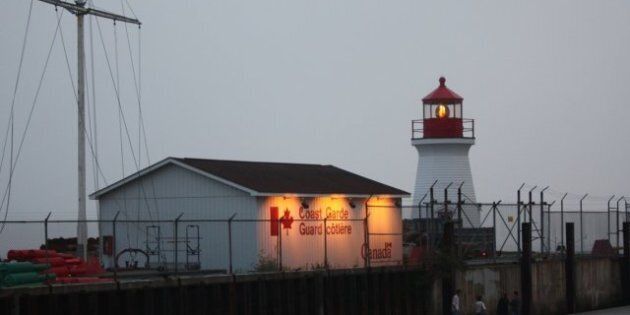
Toronto's suburbs are a textbook case of sprawl, a vast expanse of industrial parks, generic box stores and strip malls, and bland subdivisions with identical-looking tract homes. The landscape is spread out and car dependent, with imposing multi-lane thoroughfares that discourage walking. Greater Toronto experienced explosive post-WWII growth however, until recently, there was not a real questioning of what kind of growth was desirable.
Car-dependence has environmental consequences -- exhaust fumes and dependence on fossil fuels -- and health consequences of people driving more and walking less. Toronto's sprawl also consumes forests and farmlands and creates heavy infrastructure costs in maintaining roads and services for such a spread out landscape. Toronto's commute times are among the worse in the world.
Given all this, Toronto's downtown has become an increasingly desirable place to live with a recent RBC-Pembina poll showing that 81 per cent would choose a smaller house if amenities such as shopping and mass transit were accessible by walking and if commutes to work were short. Seventy-nine per cent of respondents said that affordability influenced where they ultimately lived -- in particular the low availability of housing in the city centre made it more expensive versus readily available housing in the suburbs. This represents a mismatch of supply and demand.
There is a growing realization of the problems of sprawl among policy-makers. The greenbelt around metropolitan Toronto and the "Golden Horseshoe" region stretching along the western shore of Lake Ontario was established by the provincial government to preserve forests and farmlands and geographically contain Metro-Toronto's sprawl.
At the municipal level, there are increased efforts in many of Toronto's suburban municipalities to promote walkability, density, and mixed-use zoning along the lines of downtown neighbourhoods -- either by promoting older downtowns or "retro-fitting" older malls and box store developments to become more like walkable downtown streets.
I have written in the past about Mississauga's Downtown21 project in the area of Square One Mall. It represents an ambitious plan to establish a true downtown for Mississauga -- to overcome its image as a bland car-dependent suburb. It represents an attempt to promote density and walkability, with residential, commercial and (with mixed-success) office facilities within walking distance. This downtown includes a civic centre -- Celebration Square adjacent to City Hall and the public library -- where community and civic events are held -- promoting a greater sense of community.
The process of establishing and implementing the Downtown21 plan has prioritized public consultations and town halls.
Another example from Mississauga, while much less comprehensive than Downtown21, represents some simple and low-cost steps to promote walkability and a sense of community that can be easily emulated elsewhere (including with malls and strip malls in New Brunswick). Mississauga's Erin Mills Mall, while far from being a true downtown-like area, includes a façade with a clock tower at the main entrance that gives the mall less a "boxy" feel and more the appearance of a true community centre. There are also tree-lined pedestrian walkways leading from the street to the mall's entrance so that pedestrians can enter the mall without having to dodge cars in the parking lot.
Furthermore, in the area of Erin Mills Mall, there is a promotion of mixed-use zoning where condos/apartments, a library, and a school are all in close proximity (and within walking distance) of each other and the mall.
The third example comes from Milton, an agricultural town that has recently been absorbed into Greater Toronto and is rapidly transitioning into a suburb/edge city. A sign of Milton's rapid growth, in 2001 Milton had 31,471 residents. In the 2011 census that number was up to 84,362. Some estimates have the population now closing in on 100,000.
Milton's old downtown has become a focal point in this rapidly growing and changing municipality. The old downtown is popular, with bustling art stores, cafes, and restaurants. Some newer residential developments promote proximity to the old downtown. One development, called Heathwood Traditions, primarily features pictures of Milton's old downtown on the section of its website showing a photo gallery of Milton. Furthermore, the newly built homes in Heathwood imitate pre-WWII architectural styles. There seems a strong desire in Milton to avoid accusations of bland architecture that afflict the (comparatively) older suburbs of Toronto.
The above examples represent three instances of moving away from sprawl - building a downtown in the case of Mississauga's Dwontown21, subtle changes to a suburban mall to promote walkability and community in the case of Erin Mills, and promoting an older downtown in the case of Milton.
Are there any lessons here for New Brunswick? While Toronto exists on a much larger scale than any of our cities, there are notable parallels worth noting.
The last census identified the province's three largest cities - Fredericton, Moncton, and Saint John -- as growing. Suburban municipalities like Quispamsis and Dieppe were among the most rapidly growing. In this context, there needs to be real questions about the kind of growth we want, about preserving the character of our cities, the strong sense of community, and not have this subsumed in a sea of generic car-dependent sprawl. We should not have to wait until damage to our urban and suburban landscapes becomes chronic.
Plan Saint John represents a great attempt to promote walkability and community. In Fredericton's last municipal election, there was a real conversation and debate about planning and smart growth spurred on by Matthew Hayes's mayoral candidacy and the election of new councillors who favour smart growth principles. We need growth in this province that is people-centred, it is crucial to have this conversation now.